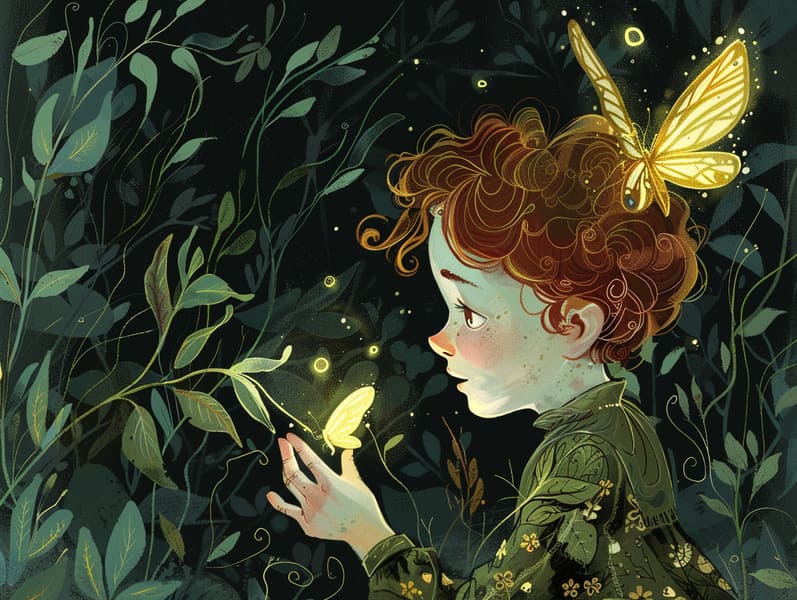The Rise of Famous Fairy Tales with Their Unceasing Delight.
The Rise of Famous Fairy Tales with Their Unceasing Delight.
Blog Article

Traditional fairy tales have timeless appeal. These narratives have been told from one generation to the next centuries before they were ever recorded. They came from a variety of traditions, including Indigenous traditions. They were initially transmitted among older generations, often carrying themes and messages reflective of the societal norms and beliefs of the time.
Jacob and Wilhelm Grimm, Jacob and Wilhelm (the Grimm brothers), were among the first to gather many of these beloved stories. Their published works, "Grimm's Fairy Tales," included stories like "The True Bride," "The Bread Crumb Trail," and "Schneewittchen," which have since become staples in the world of timeless fairy tales. Similarly, the Danish author's fantastical fairy tales, such as "The Story of the Little Mermaid," and "The Story of the Ugly Duckling," have touched hearts worldwide, establishing their place in the pantheon of iconic fairy tales.
Though they are centuries old, traditional fairy tales remain as impactful as ever, especially as bedtime stories for kids. These delightful tales are now available in many formats, including colorful picture books, enchanting animations, and online storybooks.
Their continued relevance can be traced to several delightful features:
Moral Lessons: Classic fairy tales often offer important moral lessons. Stories like "The Tale of the Boy Who Cried Wolf" teach the value of sincerity, while "The Tale of the Tortoise and the Hare" illustrate the traits of determination and modesty. These stories offer children clear distinctions between virtue and vice, shaping their moral compass in a tender yet significant way.
Sympathy and Perception: Ancient fairy tales frequently portray protagonists facing challenges and problems, encouraging young readers to identify with their struggles and applaud their triumphs. For instance, "The Tale of Beauty and the Beast" reveals the necessity of seeing beyond the surface to acknowledge the real person of a individual, enhancing insight and recognition.
Cultural Knowledge: Many traditional fairy tales are rich in the cultural contexts from which they blossomed. Engaging with these fairy tales can provide intriguing perspectives into different societies, encouraging a sense of cultural appreciation and discernment.
Creativity and Imagination: The magical elements in traditional fairy tales—talking beasts—ignite children’s inventiveness. These narratives take readers to fantasy realms, boosting fantasy-filled thoughts and a sense of fascination that continues a lifetime.
Ancient fairy tales are not only charming but also illuminating. They serve as magical tools in building various cognitive and emotional skills in the young. When classic fairy tales are read aloud, they improve communication skills by introducing new lexicon and complex sentence structures. This practice also improves hearing perception and attention, as little ones concentrate deeply, enthusiastic to see what happens next.
Furthermore, conversing about the themes and characters of timeless fairy tales can enhance thought processes and evaluative skills. Kids learn to recognize patterns, forecast, and understand cause and effect. These talks also aid young readers verbalize their thoughts and feelings, adding to their emotional intelligence.
In today’s modern era, the presence of digital fairy tales has made these fairy tales more accessible than ever. Web platforms and programs give large libraries of classic fairy tales that can be perused or listened on anytime, anywhere. Fairy tales recited are particularly in demand, offering an interactive way for young readers to engage with these alluring stories. Audio stories and read-out-loud videos bring characters and settings to life, often supported by captivating sound effects and instrumentals that amplify the story adventure.
The everlasting appeal of classic fairy tales lies in their ability to evolve to new eras while these guys retaining their essential themes. Contemporary revisions of these fairy tales often bring in more representative figures and modern settings, making them accessible to today’s audience. However, the main ideas of valour, goodness, and truth remain unchanged, continuing to move listeners of all ages.
Ancient fairy tales also offer a sense of protection and predictability. They disclose a structured narrative with a transparent beginning, middle, and end, often finishing with the conclusion of conflicts and the triumph of righteousness over wickedness. This uniformity can be consoling for little ones, bringing a sense of solidity in an dynamic world.
Traditional fairy tales continue to enthrall and inform new generations, maintaining their magic and impact in modern society. As kids' bedtime tales, they yield a perfect blend of allure and teaching, developing moral values, empathy, and creativity. The availability of web-based fairy tales and the widespread nature of fairy tales recited guarantee that these traditional tales remain within reach to new generations.
By continuing and making known these narratives, we continue to treasure the rich tapestry of fables and cultural heritage. Whether you are seeing a vibrantly illustrated book, exploring a electronic library, or listening to an narrated book, the enchantment of old fairy tales is always within reach. These narratives illustrate of the endless magic of narratives and its ability to bind us across generations and cultures.
Whether you are perusing a gorgeously illustrated book, perusing a online collection, or hearing an read-aloud story, the appeal of popular fairy tales is always within reach.
These narratives show us of the unending nature of stories and its ability to unite us across generations and cultures, creating a bond that charms and informs alike.